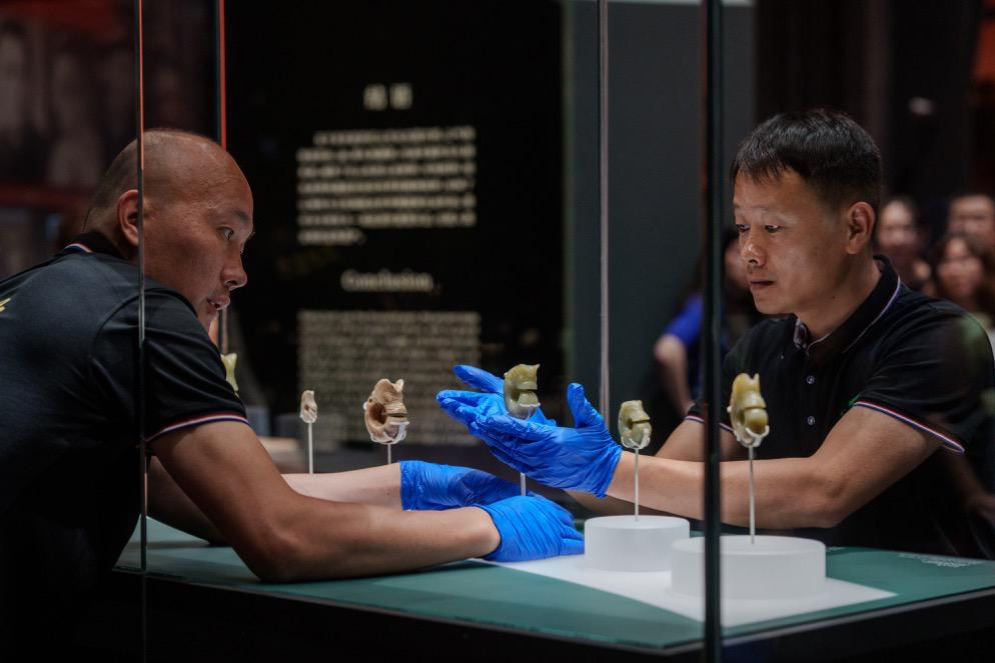5,000-year-old tusk carving of silkworm unearthed in relic-rich province

ZHENGZHOU - A boar tusk carving of a silkworm, dating back over 5,000 years, was unearthed in Central China's Henan province.
The carving, 6.4cm long, nearly 1cm wide and 0.1cm thick, was believed to be China's earliest carving depicting silkworms, said the archaeology institute in Zhengzhou, capital of Henan province.
Experts speculate that the silkworm was spinning as the artwork is in the full shape of the letter C with its back hunching and head and tail up.
"The spinning shape of the carving suggests that ancient Chinese people were familiar with the habits of silkworms," said Gu Wanfa, head of the institute.
Gu said the ancients in the Central Plain had also mastered the skills of silk farming given the silk relics found at two nearby archaeological sites that can be dated back to the Neolithic Age.
The artwork will contribute to the study of the origin of silk and related handicraft industry, Gu added.
The tusk craving was discovered in the Shuanghuaishu Remain in Gongyi city, believed to be one of the key birthplaces of Chinese civilization.
- CPC members work against the clock to restore normal life in rain-hit Hunan
- Ceremony commemorates legendary ancestor of the Chinese civilization Fuxi
- Former KMT chair leads Taiwan delegation to honor Fuxi, Chinese culture
- Shanghai conference discusses occupational mental health in China
- Qingdao Summit strengthens global ties through multinational cooperation
- Chinese vice-premier calls for championing humanity's common values, promoting multipolar world





































